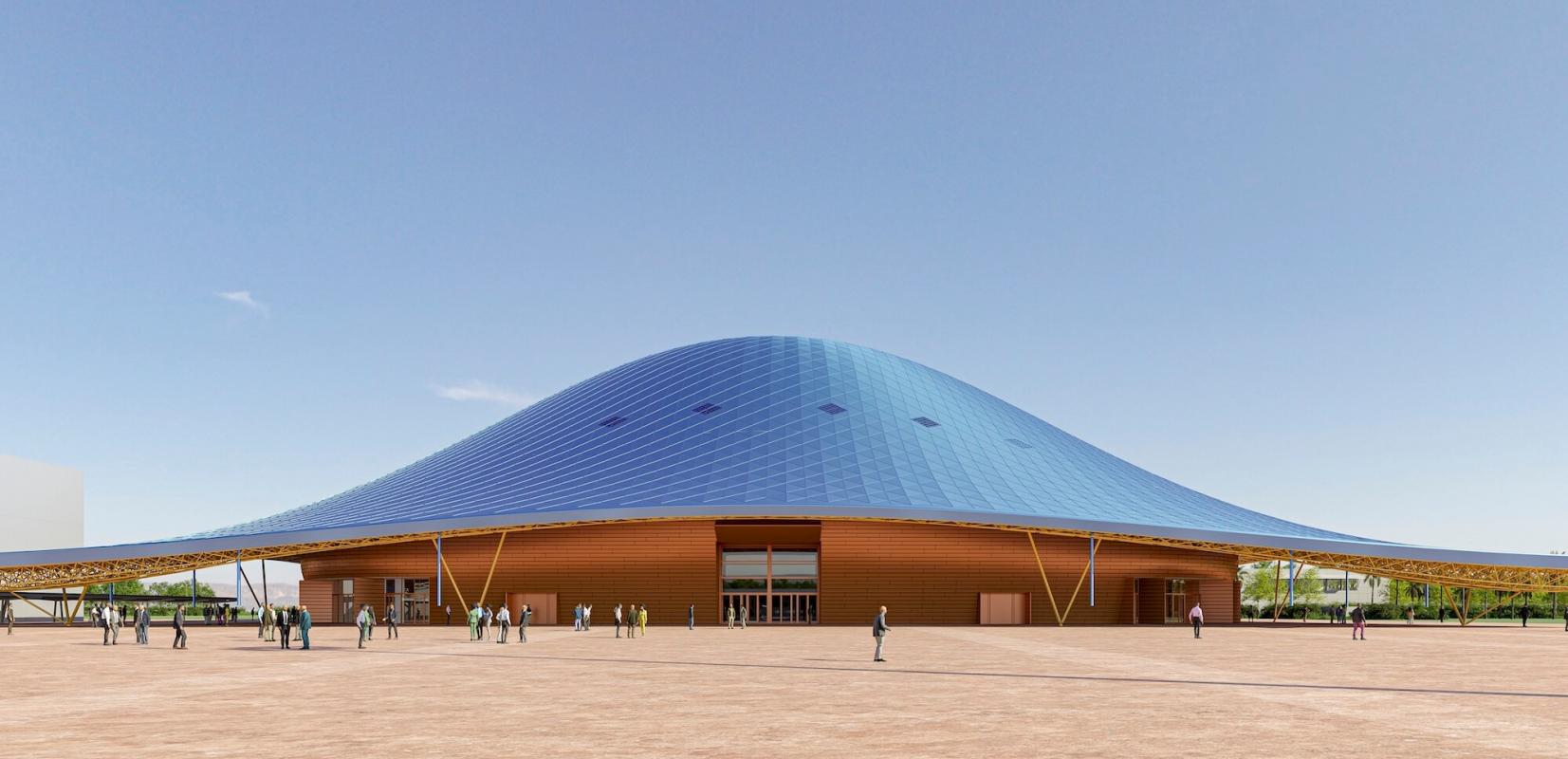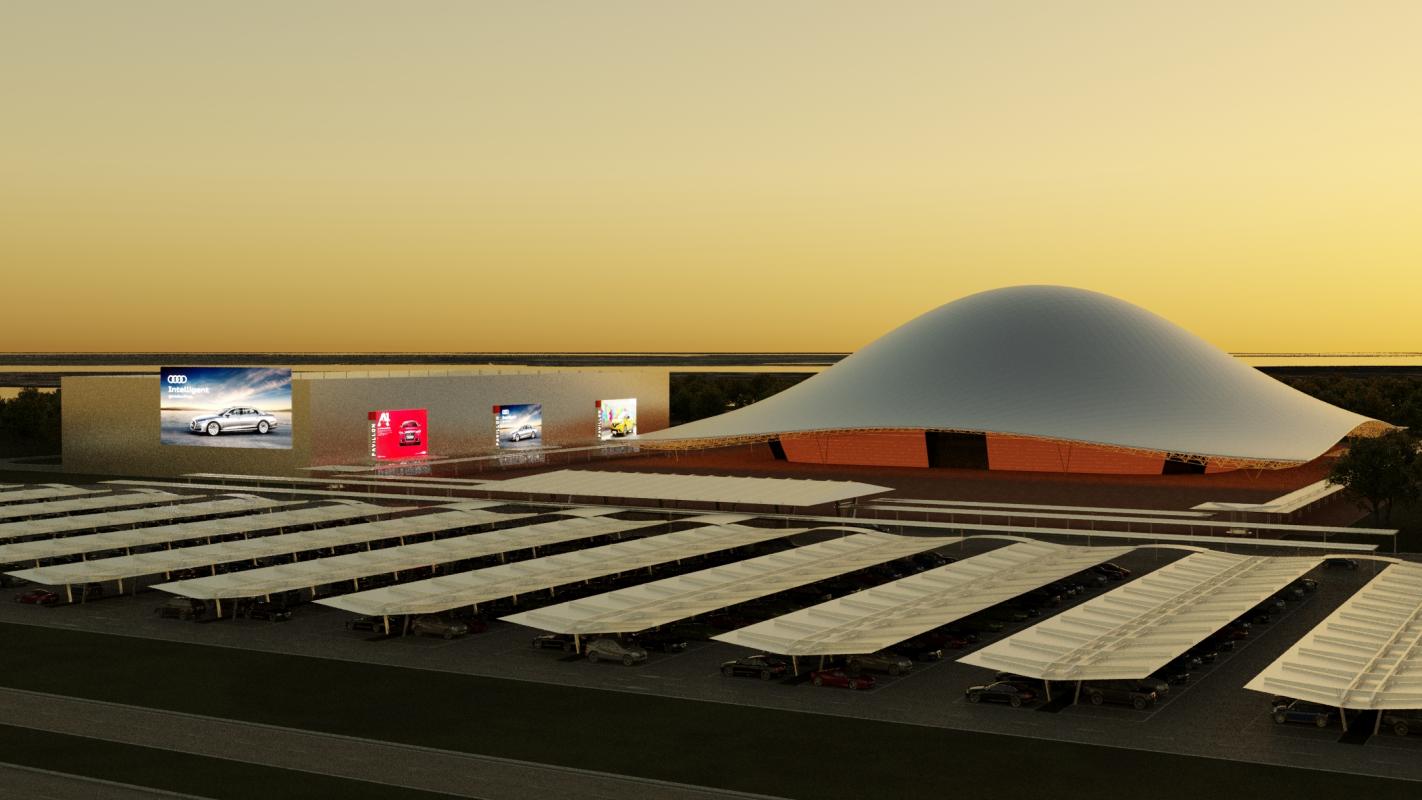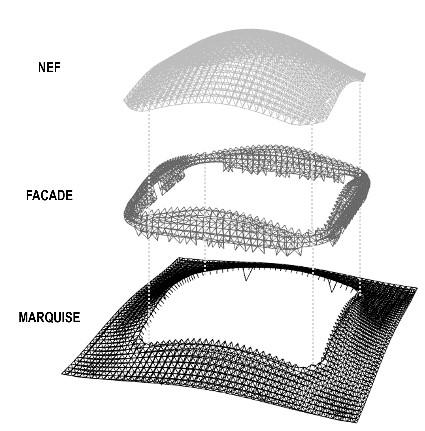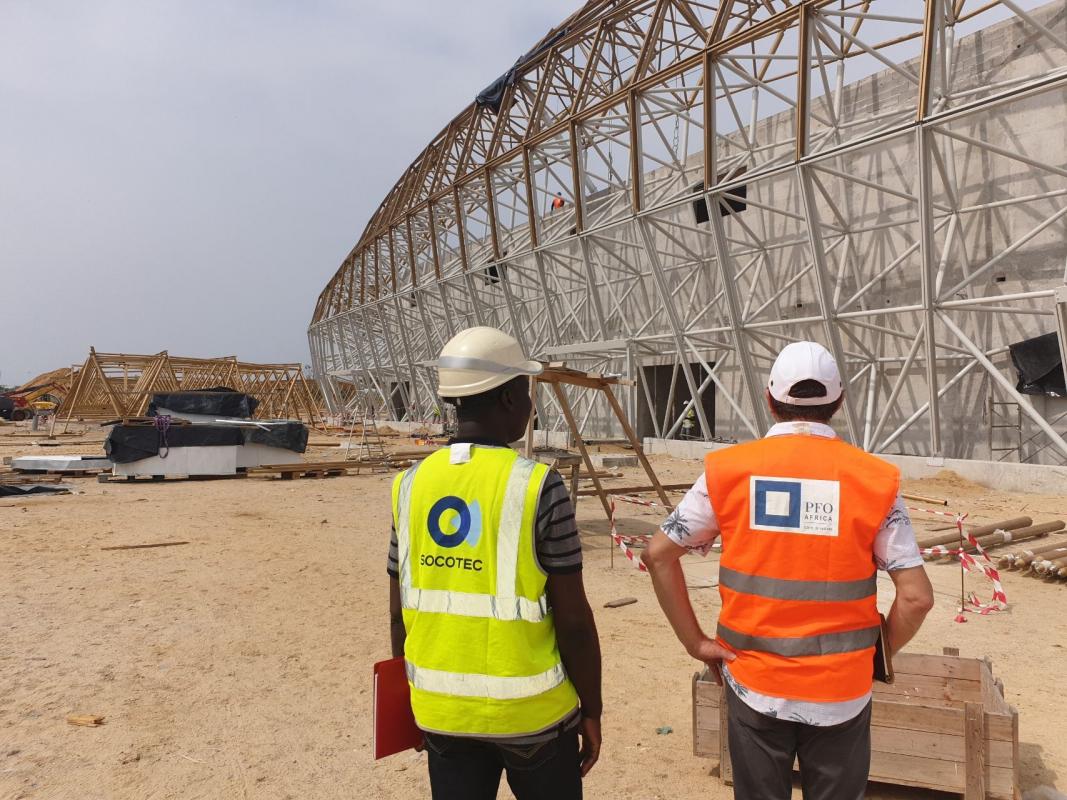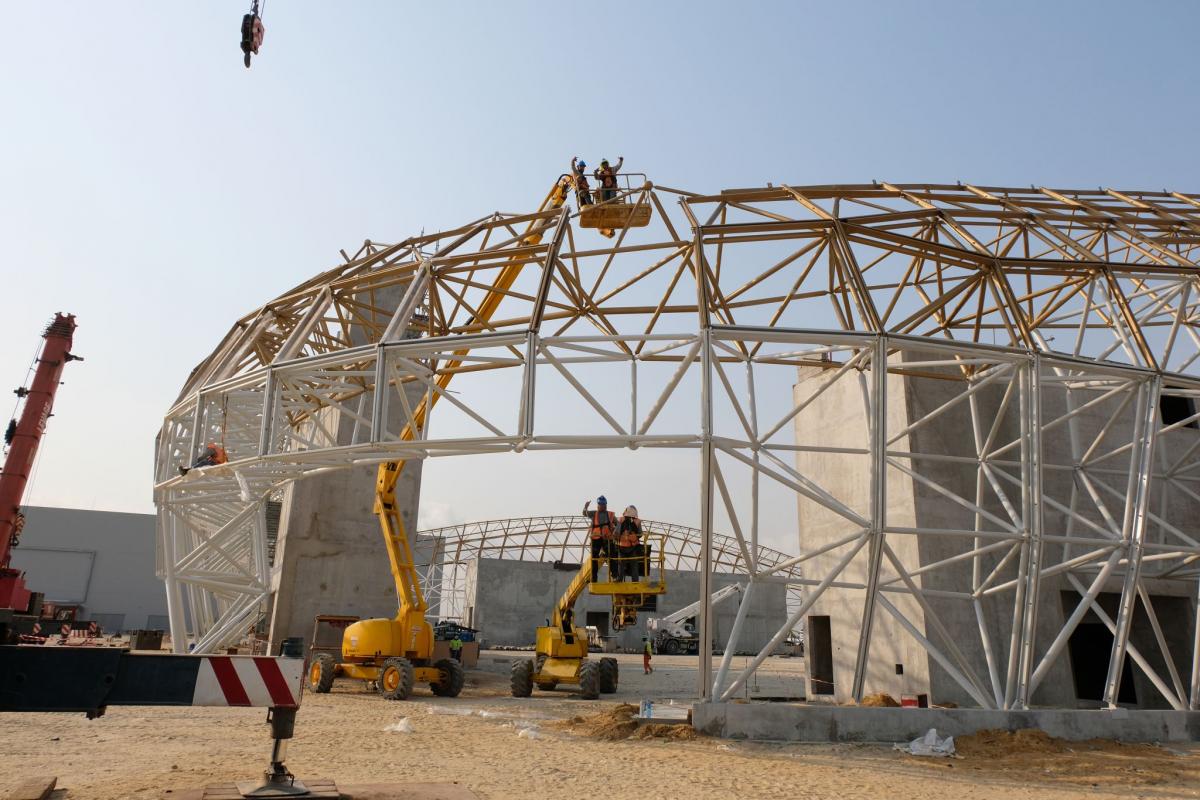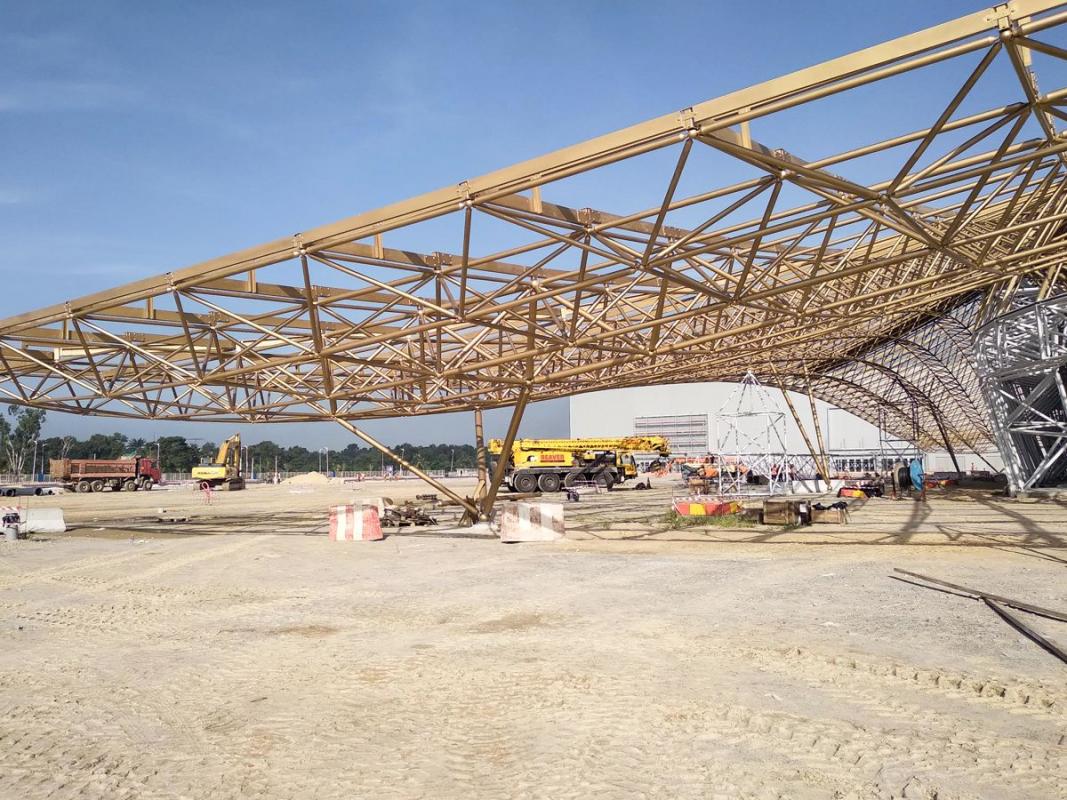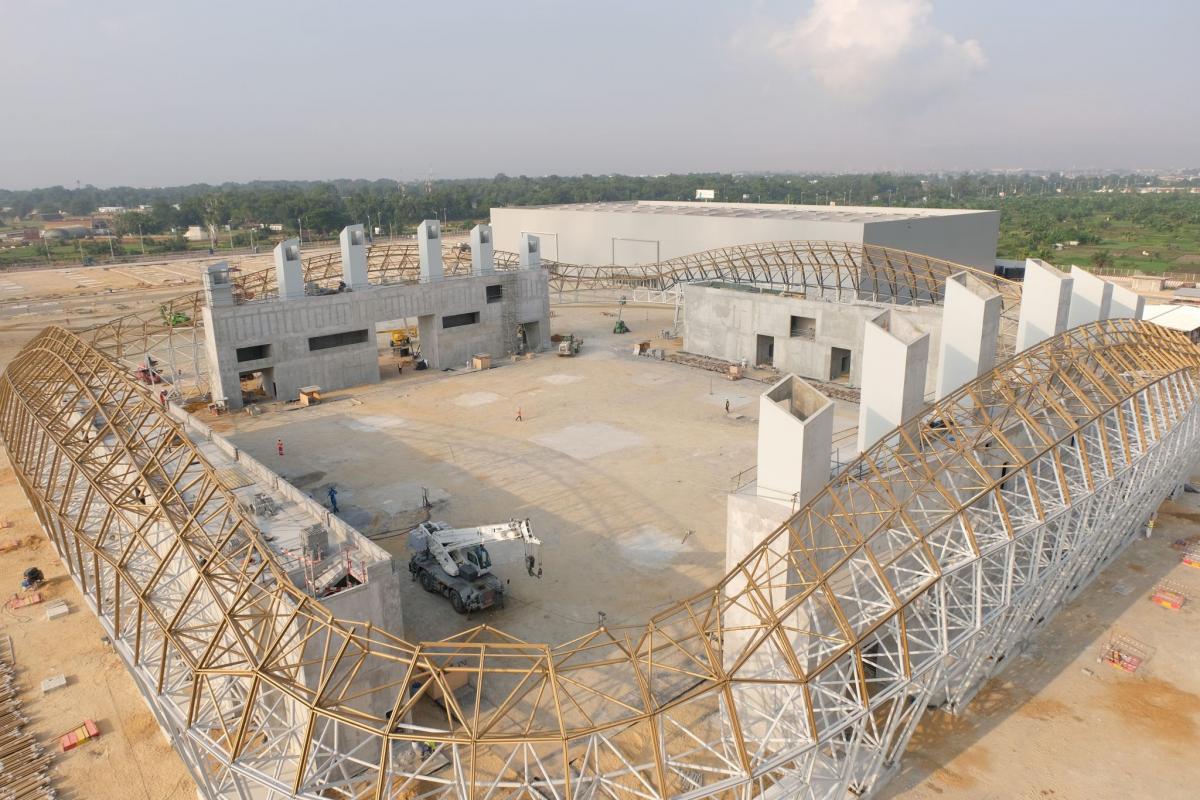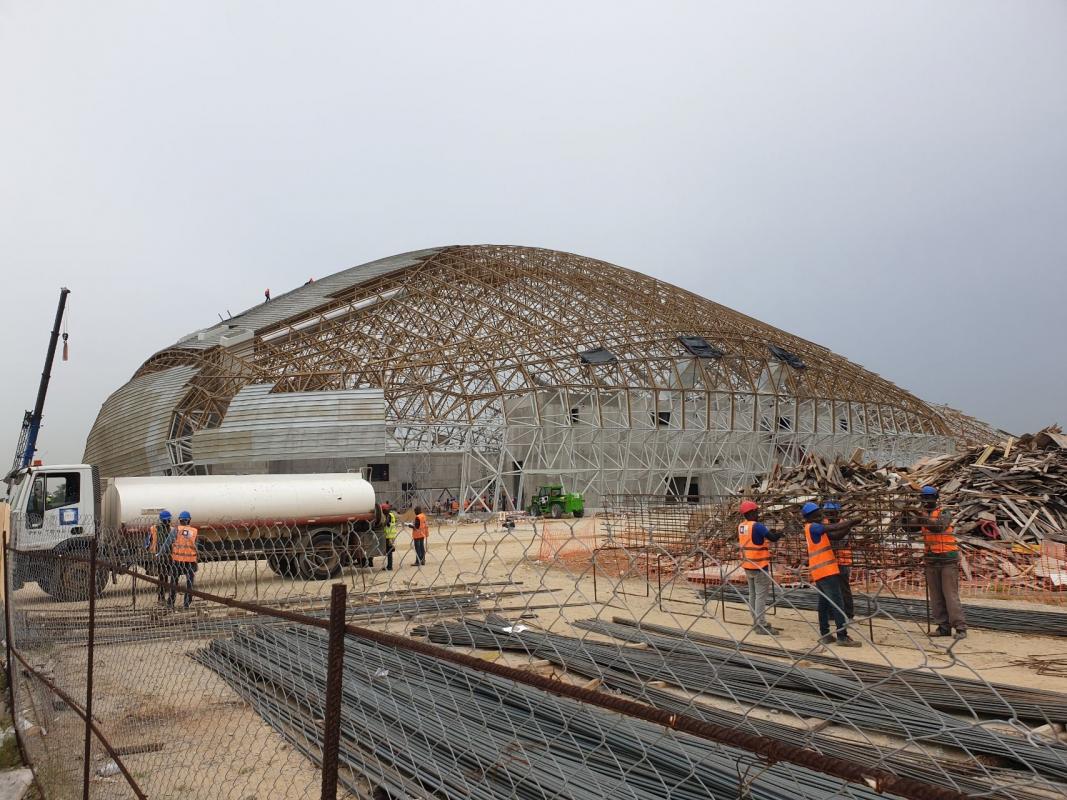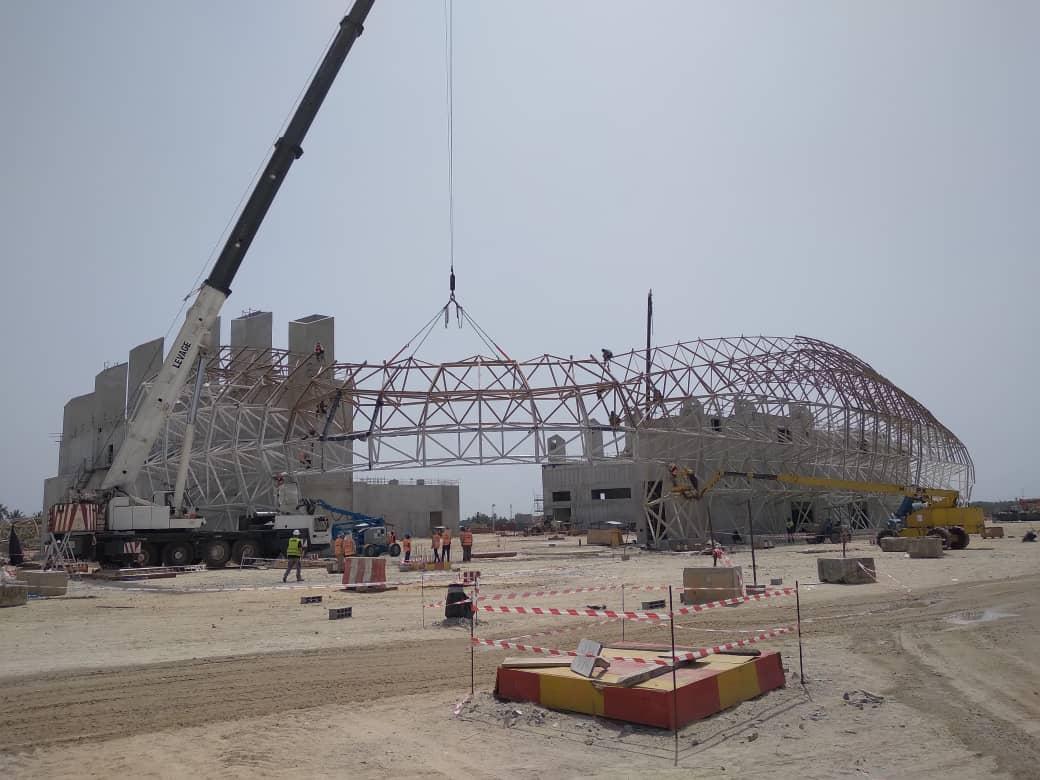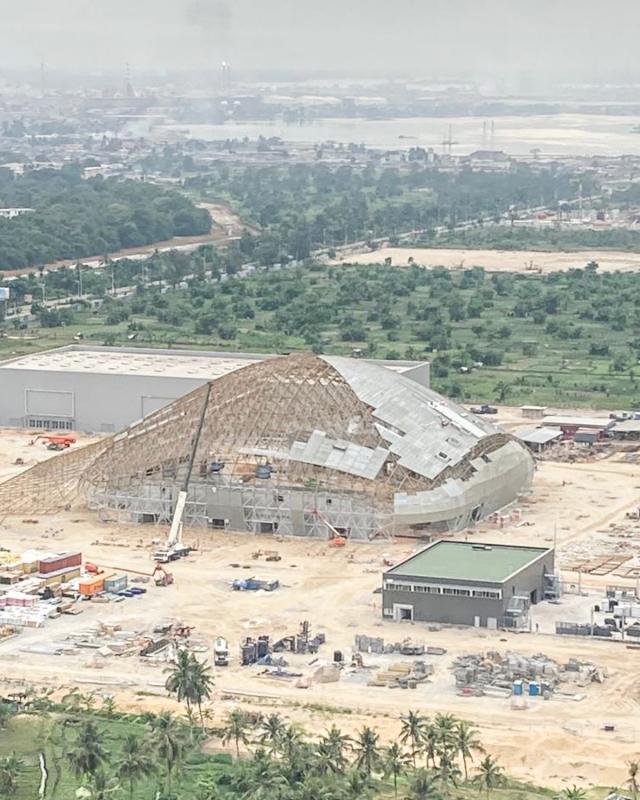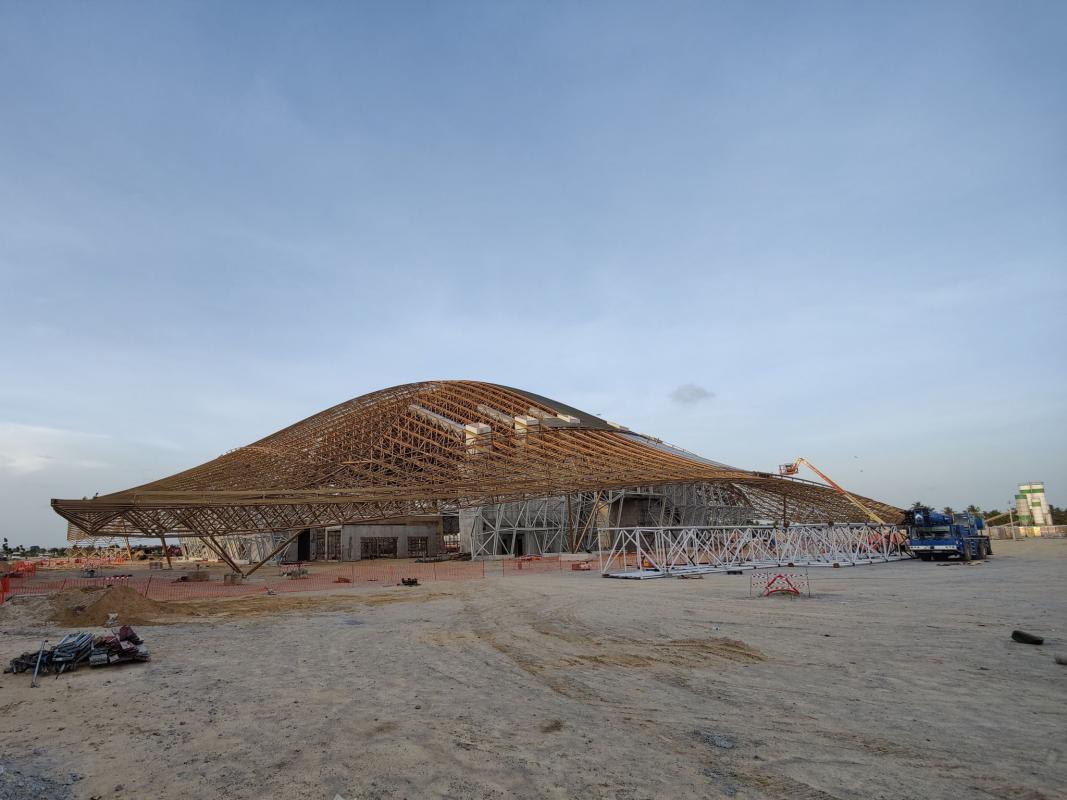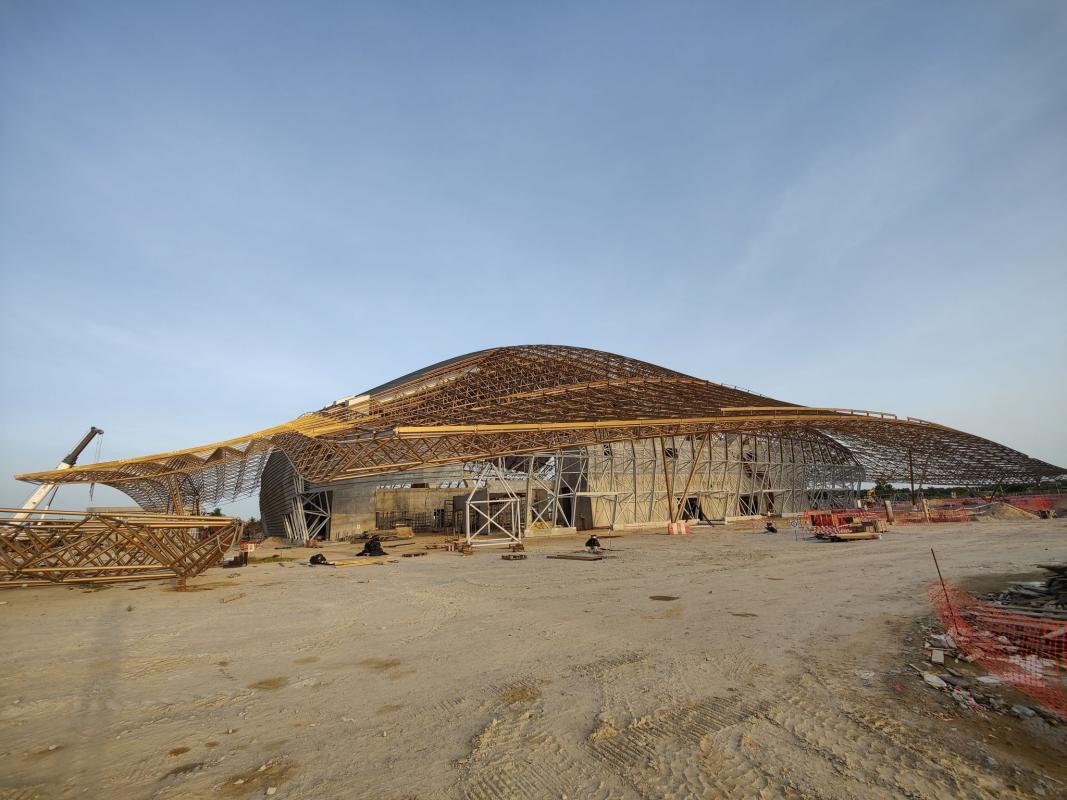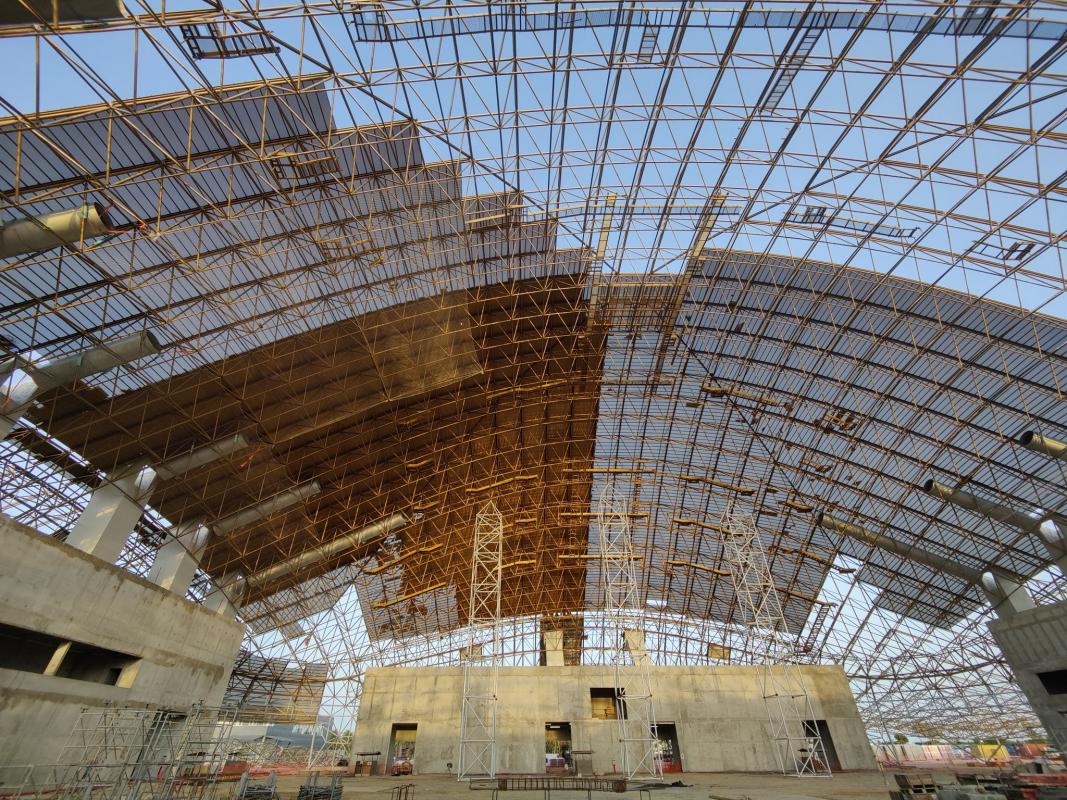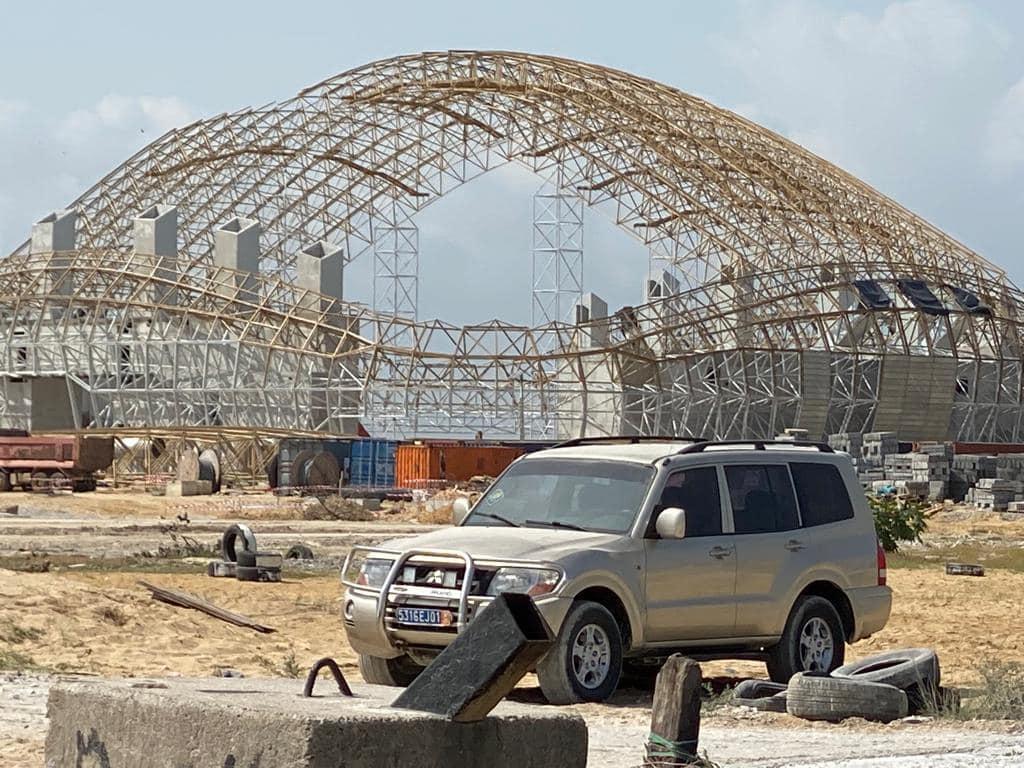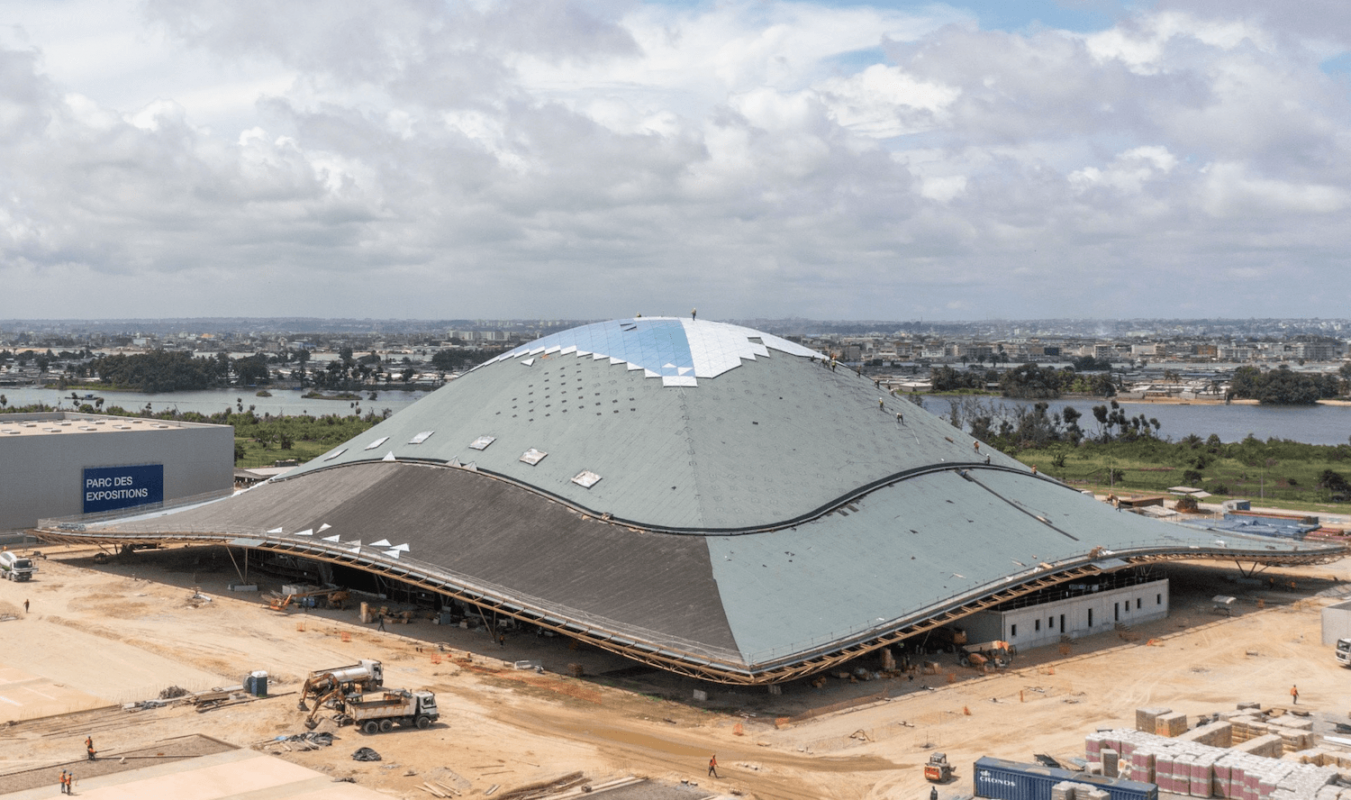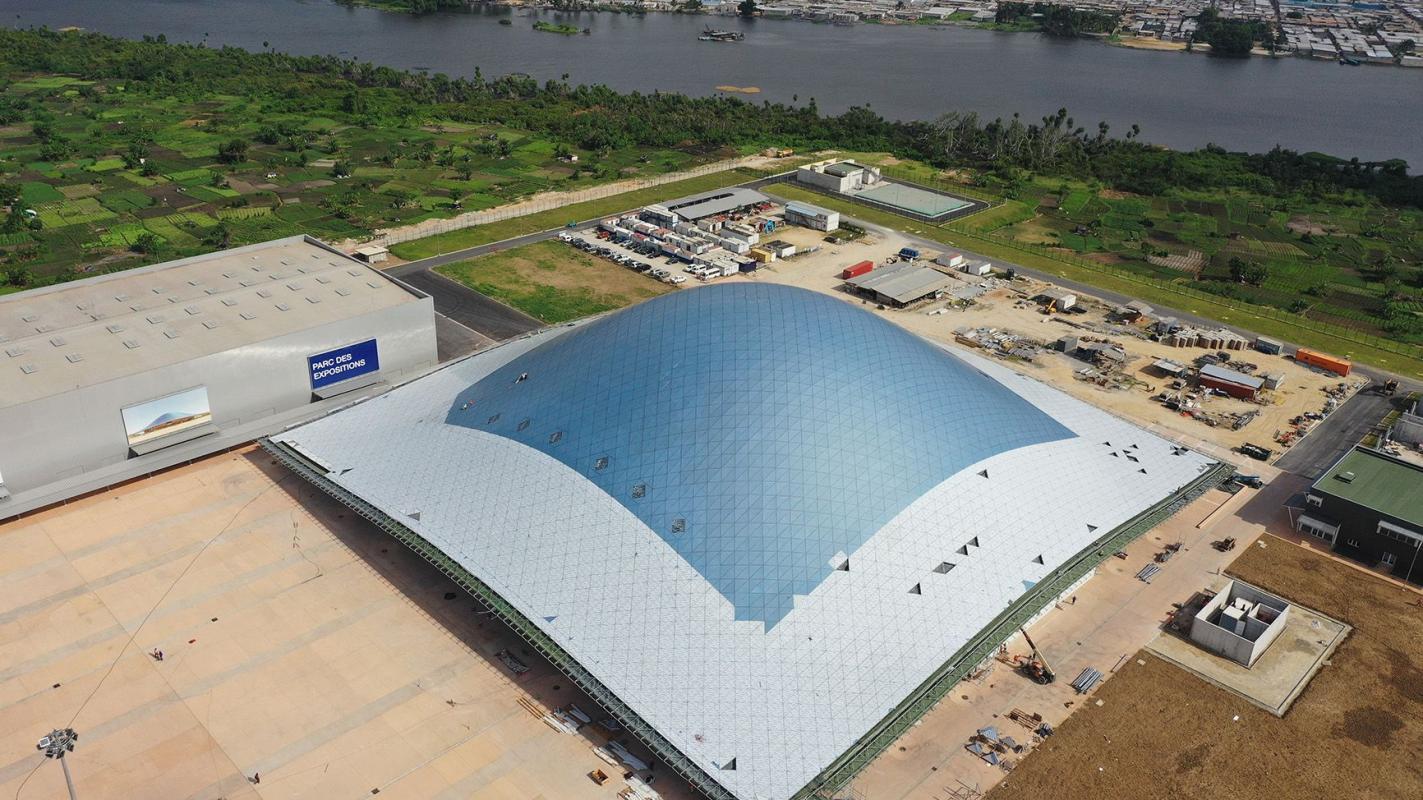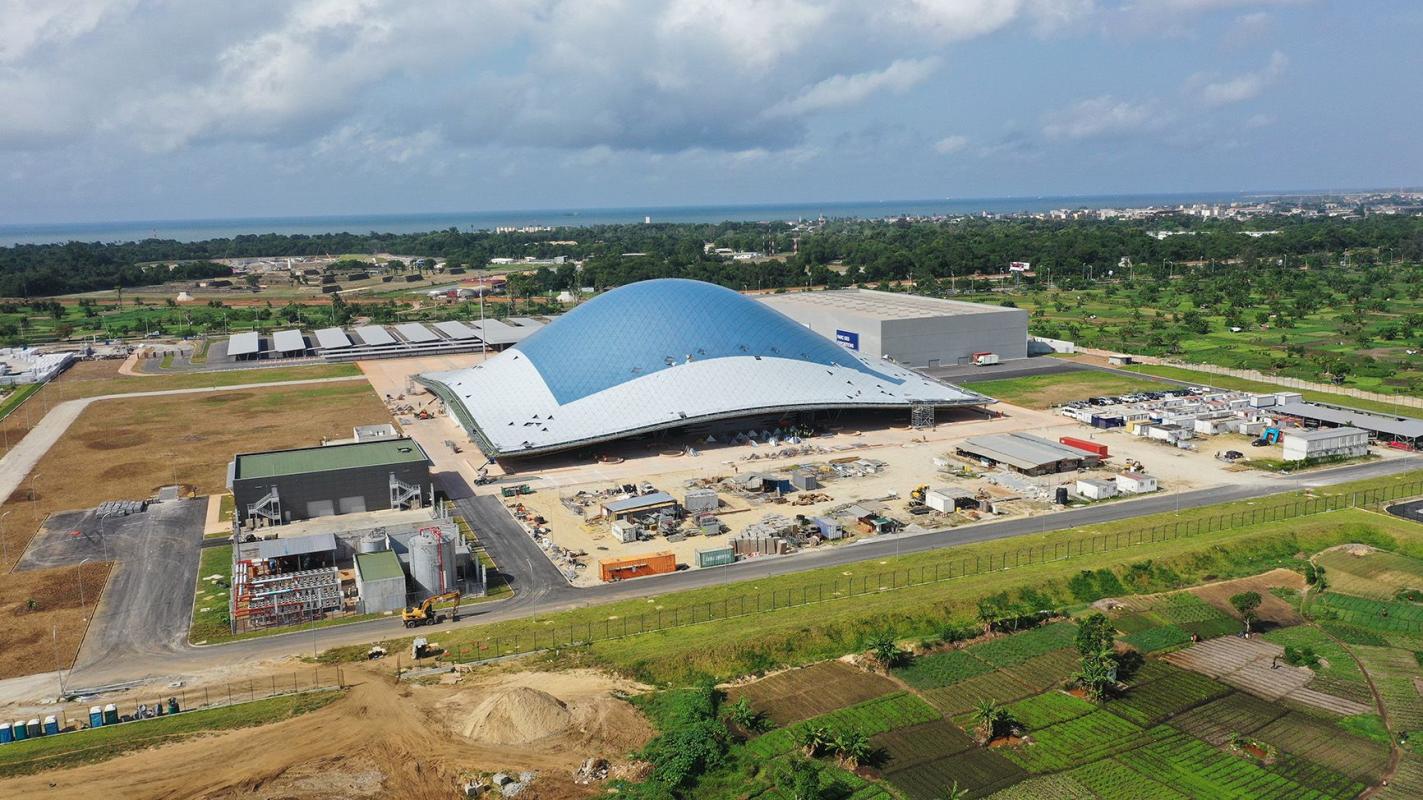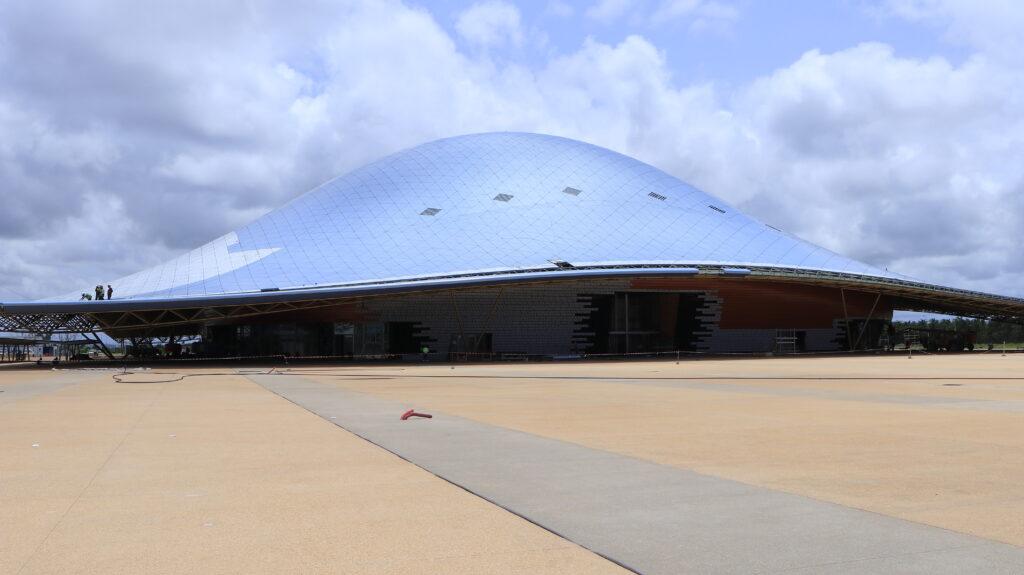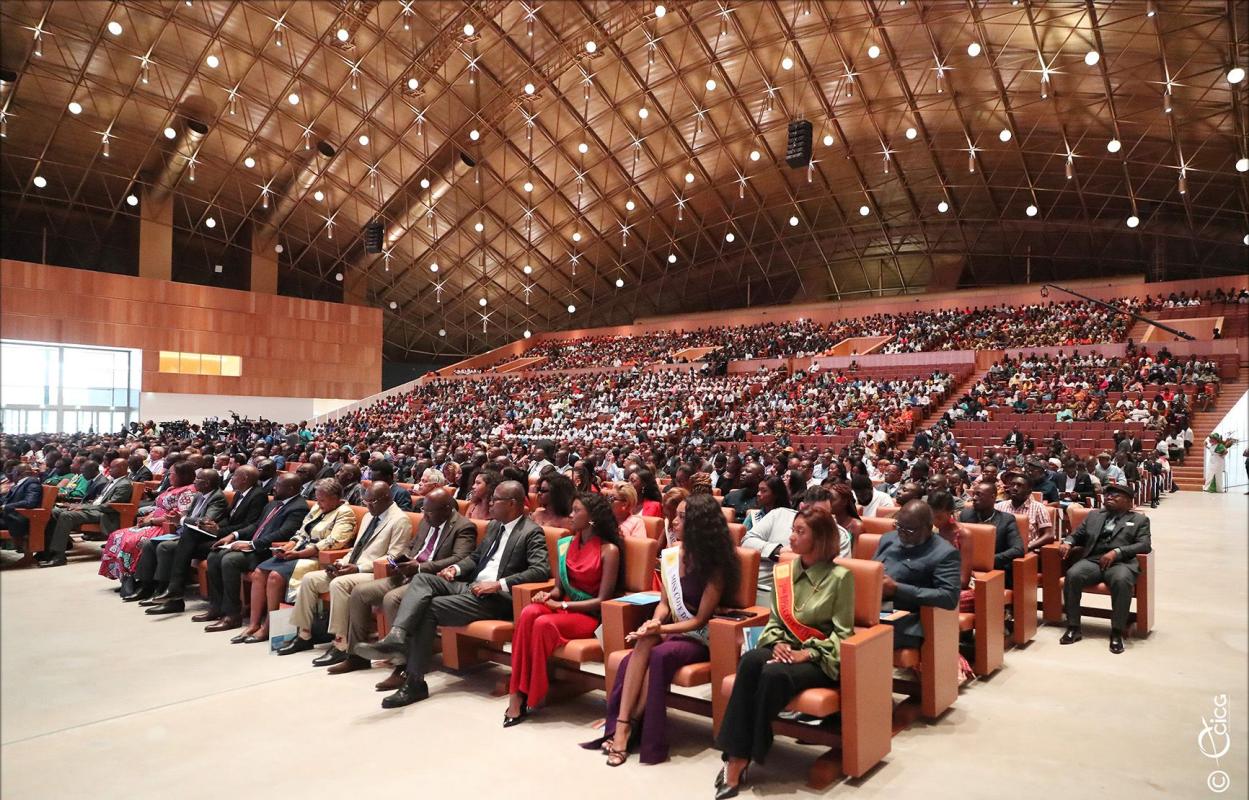Abidjan Convention & Exhibition Center
Construction of the main hall of the new Abidjan Exhibition Centre
The Abidjan Exhibition Center covers a total area of approximately 30 hectares, located in close proximity to the Félix Houphouët Boigny International Airport. Its construction began in 2020 and was completed in July 2023 with the delivery of the first phase developed on 16 hectares and included the central Pavilion known as the "Nef," an 8,500m² multi-purpose hall, Exhibition Hall No. 1 and an administrative and technical support building. The whole complex is accessible through a 11,000m² Piazza offering ope-air exhibition spaces. Subsequent construction phases will expand this infrastructure with the addition of 2 exhibition halls and hotel facilities around the Piazza.
The large central hall is a convention center with a capacity of 10,000 people, fully modular thanks to its retractable stands, suitable for hosting international trade shows, conventions as well as large-scale cultural and sporting events.
The metal framework of the central hall forms a three-dimensional structure vault with sides measuring 95m with an overhanging canopy to provide outdoor space and shelter access to the hall. Its undulating roof, with a square base of 137 m on each side, reaches a height of 37m for a total covered area of approximately 19,000m².
The primary structure of the building is a spaceframe steel structure: a three-dimensional truss structure made of bars working mainly in tension/compression connected together by nodes (ball connectors).
A network of purlins rests on the nodes of the upper surface of the spaceframe to support the technical envelope of the hall and the canopy. This purlin system supports the trusses that carry the roof and take up the maintenance loads.
The framework is based on an orthogonal grid measuring approximately 3x3 meters. The precise geometry of the bars is derived from the layout of the exterior surfaces and the construction principle of the framework. As the spaceframe structure is visible from the inside, it contributes to the architectural treatment of the space. Its final design was conceived to be rational and regular in order to present a continuous alignment of the bars and to incorporate into the structural height the technical walkways providing access to the suspended scenic equipments.
This structure supports the envelope system, which consists of a multi-layer cladding complex included perforated acoustic steel tray on the inside, a layer of insulation and waterproof metal cladding on the outside. The entire roofing system follows the curved geometry of the roof structure, and is covered with a blue-lacquered aluminum composite panels, giving the final appearance and geometry of the canopy. The curved façades of the auditorium dome are clad with horizontal ocher-coloured composite cladding that extend until the junction between the hall's roof and the canopy's covering.

